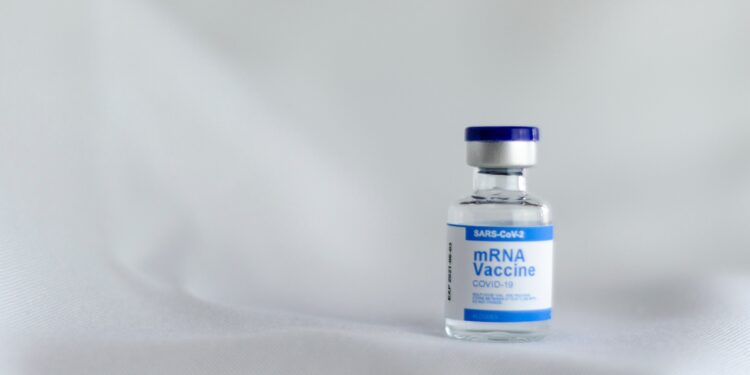Credit: UNSPLASH / CC0 public domain
New equipment developed at Cornell University could considerably improve the delivery and efficiency of mRNA vaccines by replacing a commonly used ingredient which can trigger unwanted immune responses in some people.
Thanks to their ability to form cells to produce virus killers proteins, mRNA vaccines have gained popularity in the past five years for their success in reducing the severity of COVVI-19 infection.
A method to deliver the mRNA to the cells is to wrap it inside the fatty spheres, called lipid nanoparticles, which protect it from degradation. However, a common component of lipid nanoparticles called Polyethylene glycol (PEG) can cause immune responses in certain individuals, which led researchers to seek more biocompatible materials.
Shaoyi Jioang, professor of biomedical engineering, strives to replace the PEG component of lipid nanoparticles with a more adaptable and stealthy option. Research is published in the journal Nature materials.
The delivery vehicle for a mRNA vaccine must find a Goldilocks balance – stable enough to protect mRNA, but labile enough to release it inside cells, and has been sufficiently protected to escape immune monitoring, but not so hidden that it hinders cellular absorption. PEG does the work but has certain involuntary side effects in a small subset of people.
“The human body is mainly water, so if you insert something with exposed hydrophobic fractions, such as PEG, in our blood circulation, our immune surveillance system says:” Hey, it is a foreign material “, and will generate an antibody to destroy it,” said Jiang. This environment makes it more likely to be unfavorable to a vaccine and therefore makes it more difficult for the vaccine to do its job.
The immune systems of most people are already ready to fight PEG. Previous research shows that a majority of people have anti-peg antibodies “people exposed to PEG in many commercial products such as shampoo and toothpaste,” said Jiang, adding that this widespread exposure may explain why the body is so fast to report PEG as a threat.
To solve this problem, Jiang has developed lipid nanoparticles that use a zwitteronic polymer, a crucial alternative to PEG, improving the performance and biocompatibility of the system.
Due to the super-hydrophilic nature or which likes the water of the zwitteriions, this material is able to blend into the body and more easily deliver the mRNA. This specific material material naturally derived, called poly (carboxybed) (PCB), has a perfect balance between stealth and stability.
In his recent article, Jiang found that the replacement of PEG by PCB in lipid nanoparticles leads to very effective mRNA vaccines which do not negatively trigger the body’s immune system.
Jiang works with Weill Cornell Medicine, Houston Methodist Cancer Center, the hospital for sick children from Toronto and the National Cancer Institute to move this discovery to clinical applications, especially in the development of cancer vaccines based on mRNA.
Zwitterionic nanoparticles help to hinder vaccines before immune surveillance of the body so that it induces immune responses specific to the antigen while minimizing adverse immune activation.
“With a virus like COVVI-19, you only need a tiny dose of vaccine, and our immune system will respond. But for a cancer vaccine, the tumor environment removes the immune system, you therefore need a much higher dose to be effective,” said Jiang. “If a patient has a minor problem due to the PEG, the problem will be amplified with a higher dose.
More information:
Nature materials (2025).
Supplied by Cornell University
Quote: The lipid nanoparticles “ furtive ” give the arnm vaccines a makeover (2025, May 29) recovered on May 29, 2025 from
This document is subject to copyright. In addition to any fair program for private or research purposes, no part can be reproduced without written authorization. The content is provided only for information purposes.



